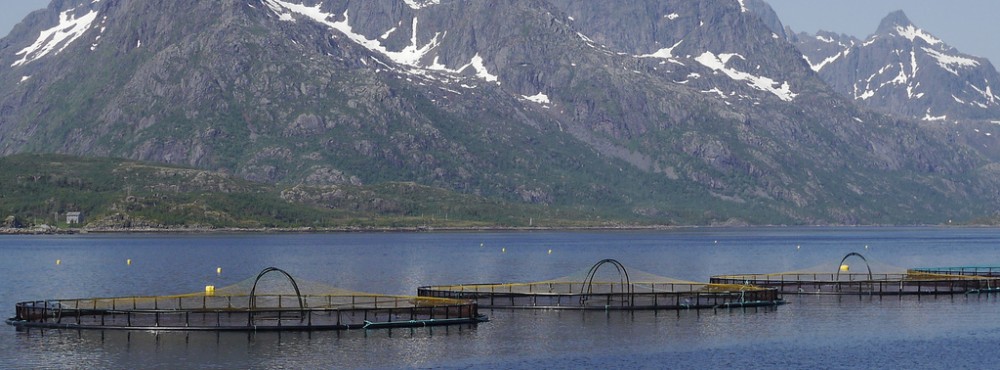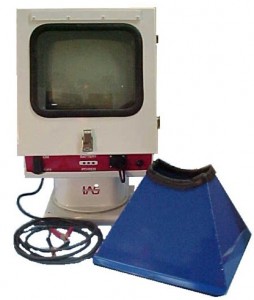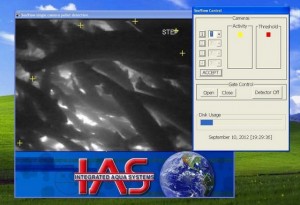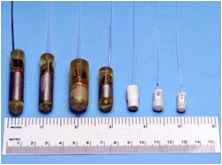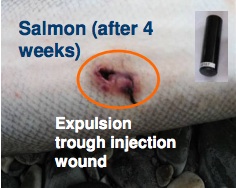TECHNOLOGY
Modern day technology significantly enhances our ability to measure some of the welfare indicators previously discussed. This page shows some of the state-of-the art technology used in salmon farms that not only give insight into salmon welfare, but management practices as well.
Monitoring System
Underwater Cameras
- Underwater cameras allow producers to directly view salmon inside the sea cage
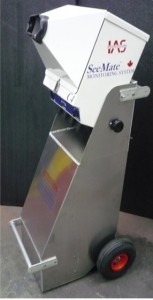
- Underwater cameras are placed within the water column of the salmon sea cage at appropriate angles that allow for visual recording of salmon behaviour
- A visual image is produced on a monitor, showing salmon behaviours such as foraging level, aggression, general activity, and even abnormal behaviour
- External physical conditions of the salmon such as bruises and lesions are also viewed
- Trained technicians observe salmon behaviour and are able to determine when feed administration is appropriate, reducing feed wastage and therefore feed costs
- Trained technicians analyze salmon behaviour and determine when feed administration is appropriate, reducing salmon starvation and therefore improving salmon welfare
- A visual image is produced on a monitor (image on right), showing salmon behaviours such as foraging level, aggression, general activity
The image that is produced along with the data recording tools (image on left)
Biotelemetry
Various devices are available to record salmon behaviour or physiological activity from a distance. This is known as biotelemetry. Of practical use on a salmon farm, tags such as “SmarTags” allow for measuring salmon physiological performance such as ventilation rate. Components of the stress response (muscle activity, heart rate, etc.) can also be measured this way.
Telemetry tags have shown elicit a stress response as a result of the handling procedure and wounds may occur after shedding the tags (image below). Thus technology use itself may create welfare problems, despite trying to help improve welfare understanding.
The above image shows the type of data that is wirelessly transmitted to the farm computer by the “SmartTags”. This record of breathing rate shows the effects of a particular stressor. It is up the the farmers to identify the problem (i.e. what stressor is causing this behavioural response and is this stressor a problem to welfare?). Proper recording practices of physical measures in the environment (pH, temperature, O2 and CO2 levels, etc.) and simultaneously correlating such recorded data with behavioural responses will help diagnose the problem. However, this may not be so easy. Thus, it is always useful to have computer programs that can analyze and objectify the problem (see below for such technology).
Welfaremeter
The “welfaremeter” is a system used to assess welfare in salmon farms. It consists of a profiling probe on a buoy placed in the sea cage and a reference proble placed away from the farm, a software program that analyzes collected data from the probes, and a data storage site on the webpage that assesses the welfare state of the farm by giving a rating on its welfare index. The profiling probe measures temperature, oxygen, salinity, fluorescence and turbidity for each half meter downwards in the cage. The probe also contains an echosounder feature that informs the technicians where the salmon are located within the water column. Based on the salmon species and salmon position in the water column, it assesses if the physical conditions of the farm are appropriate. For example, Atlantic salmon staying in suboptimal parts of the water column (not in its natural optimal temperature range of 16-18°C) can be an indicator of immune impairment or diseased state.
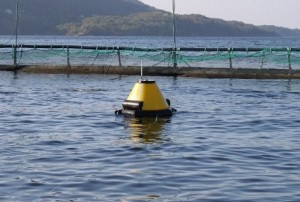
The profiling probe within the salmon farm measures physical features of the farm such as oxygen levels, temperature, etc.
Overall, a holistic view is required in order to thoroughly understand the welfare state of farmed salmon. Using a combination of technology that measures salmon physiological performance (biotelemetry), behaviour (underwater cameras), and physical features of the environment (welfaremeter) will allow the farmer to build statistical data that gives insight into his management practices. Based on personal experience, the farmer can modify practices or improve conditions of the farm using data collected via modern technology.
